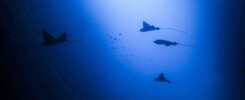Six years ago my wife told me, “Let’s go somewhere you have not been to.”
I said, “Let’s go somewhere I don’t need to meet crew members or anyone related to my work as a dive guide.”
We ended up traveling to Mongolia. Now we are back for many reasons.
Mongolia looks very different from my ordinary life in the ocean, and is very far away from the sharks and the whales that I love. Just a lot of land and about 3 million inhabitants in a country that is around the size of half of Europe. Half of the population live in the capital Ulaanbaatar and the rest are scattered around this vast country, where many still live as nomads.
In 2016 we flew, we hiked, we camped, we hitchhiked, we took the bus, and we hired a driver. We explored Mongolia. The nature amazed us. We met some wonderful people. We fell in love with the country and the people, so we wanted to go back in a few years. Then Covid happened…
six years too long
In March 2022, Mongolia opened up for tourism and it didn’t take us long to book our flights. A month later, we arrived in Mongolia. We were finally back.
We started in Ulaanbaatar, which is maybe not the most attractive city according to my taste, but this was where we could do last-minute arrangements with our gear and get international meals before heading out. Our first target was to go to Murun to meet our friends, Nara and Undraa. Nara helped us to move out of Murun and down to the south on our first visit, and we had kept in contact since then.
Our plan was to get 2 or 3 horses and explore Mongolia on horseback. Just that in the spring, the usually-sturdy Mongolian horses are still pretty weak after the harsh winter of temperatures that generally range between 30 C and 40 C below zero. These horses, which don’t get a lot of food during the winter months, would be okay with my wife, who is a tiny Filipina, but not so much with a 197-cm, 110-kg Nordic rider. So, we had a change of plan.
(Inset: Helping Nara put up their ger in the yard. Learn how here.)
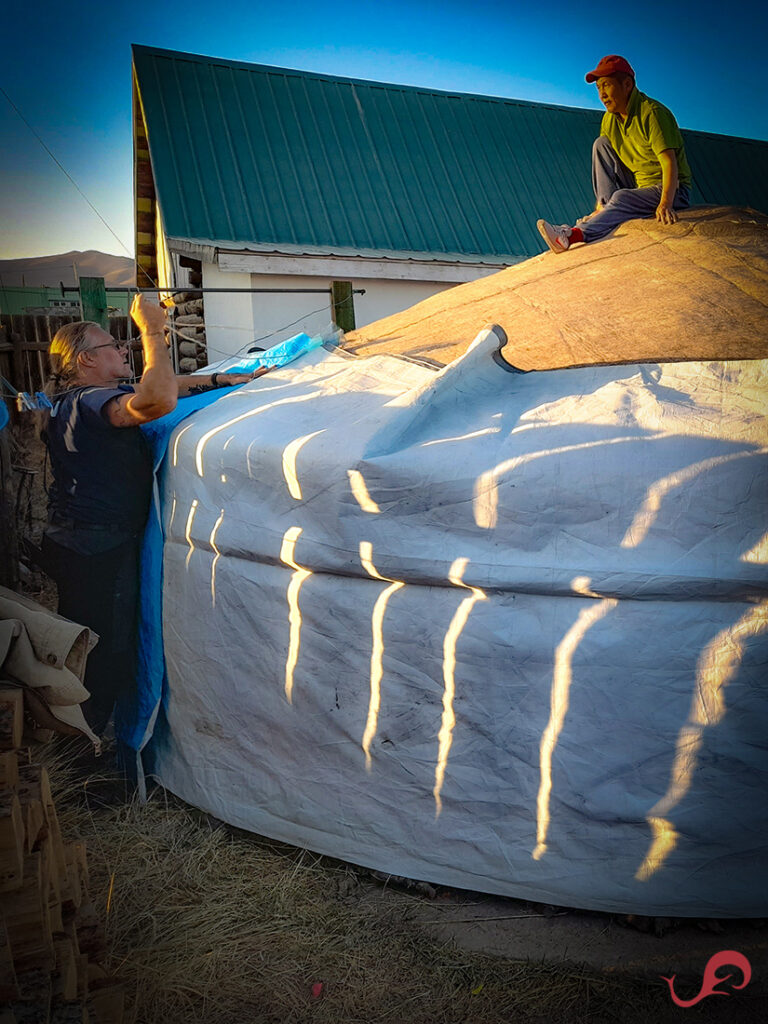
Buying a Chinese Mustang in the land of the Mongols
We bought a different kind of horse instead—a Chinese 200cc Shineray Mustang! It’s the replacement that many of the nomads use daily nowadays, even for herding. (Something Nara very much disapproves of, for not being ethical.) We went with Nara to the black market and tried one out. After adjusting the handlebar that was hitting my knees, we proceeded with the purchase and went through all the paperwork with Undraa to make it legal. That is a chapter in itself…
After some days’ practice and getting some lumber, we set our backpacks on the back rack and put ourselves on our new Shineray motorcycle. We were way too overweight! We had to go back and redo our packing. Still, with the backpacks plus Tanya and myself, we exceeded 200 kg, which we realized later on was the maximum weight on the tire… It was not easy to drive.
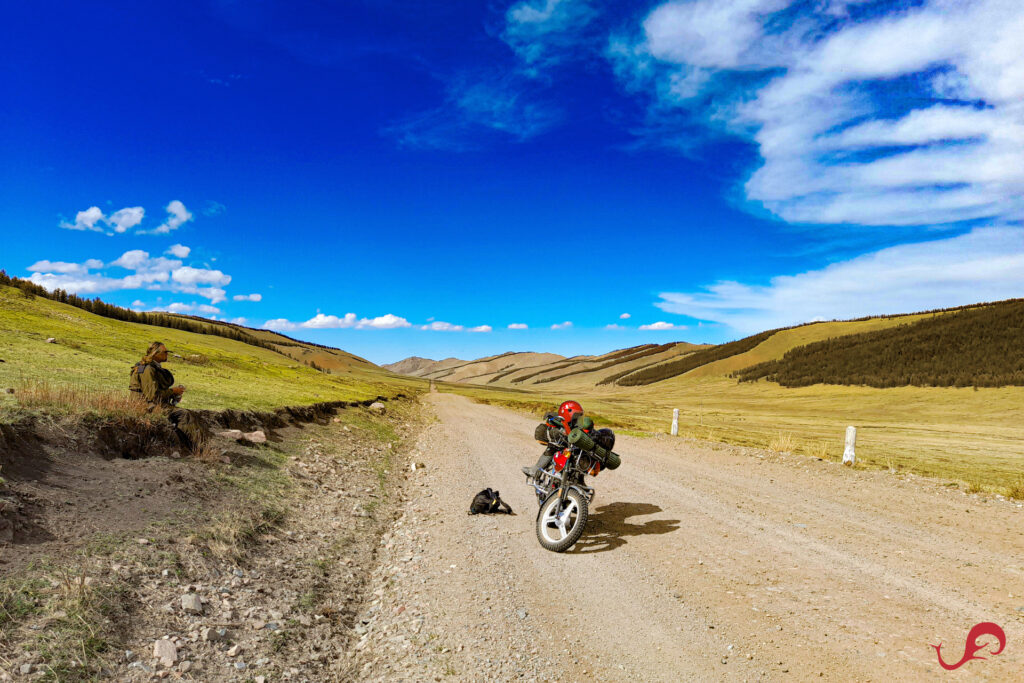
Why do you like Mongolia?
I get this question a lot from people. I go ehh… and then uhm… Well, it’s…
It is hard for me to put it into words. I can’t put my finger on it and had to think hard. I would say it’s spiritual. The land, the people, the nature, the sky and the space. The feeling that in one of very few countries today there is still a place where there is freedom of movement, almost without restrictions unless you get close to the Russian or Chinese borders. Also, the harsh climate forms the way of life and molds the people.
You need time and patience to explore Mongolia, move around, and live in this country. I kind of get it. I think my wife had a bit of a harder time adjusting on occasion. 😉 Yet she was the one who wanted to go back the most!
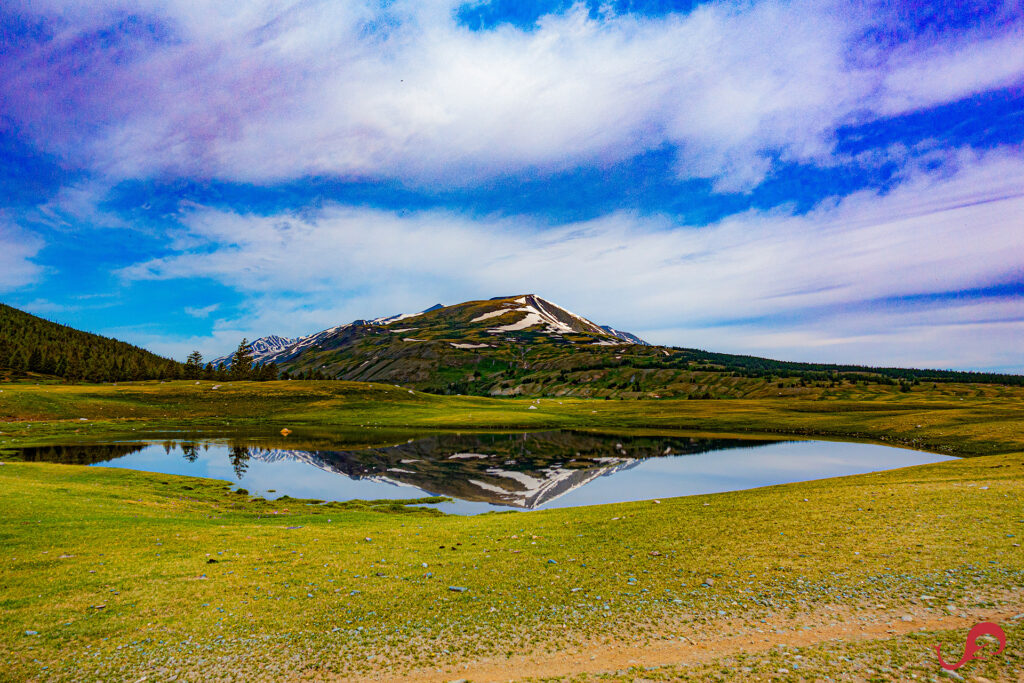
Around 4500 km on our Mustang
I thought my Garmin GPS had the maps of Mongolia. They did not. I found out later on that there were some Russian military maps that could be downloaded. During the time of the Soviet Union, Mongolia was part of the USSR until the Wall fell.
Google maps sometimes helped, but most of the time there was no cellphone connection on the dirt roads. Since we were mostly off-road, we could only use the offline maps, which were not entirely up-to-date.
Not as straightforward as it seems
So, we had two topographical maps, directions from Nara and Undraa, and an ordinary compass. How hard could it be? And there were signs and people to ask, right? Well, signs you can forget about, since the roads on the steppe go all over; not only right and left. Sometimes you got 5, 10, 20 road tracks going in the same direction, but then one suddenly goes over a mountain into another valley… And after our interactions with locals, we learned that even they got lost.
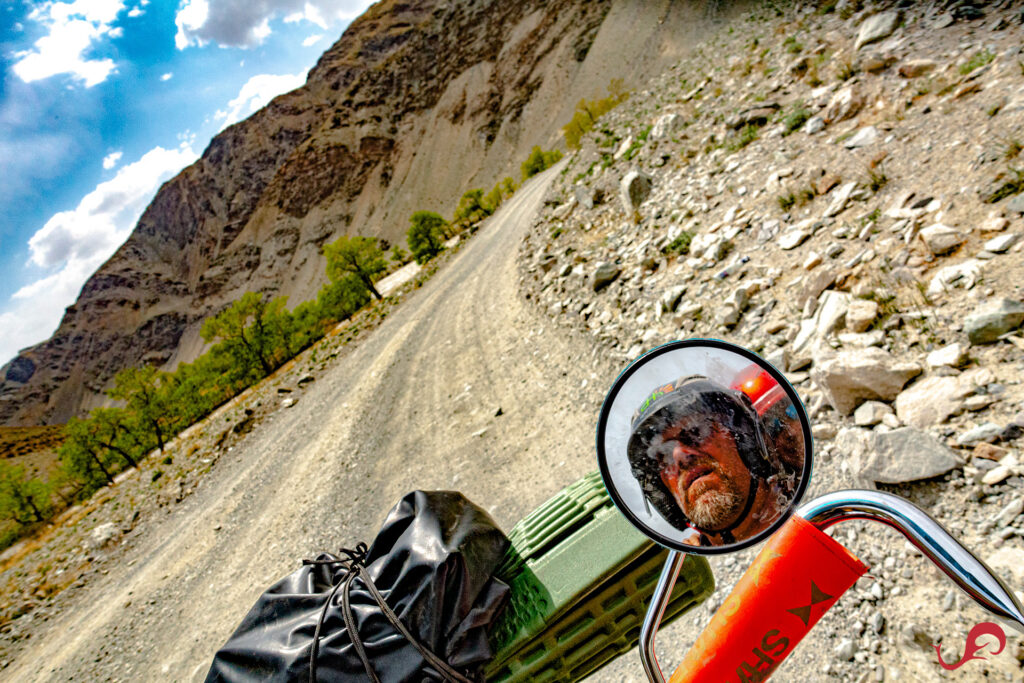
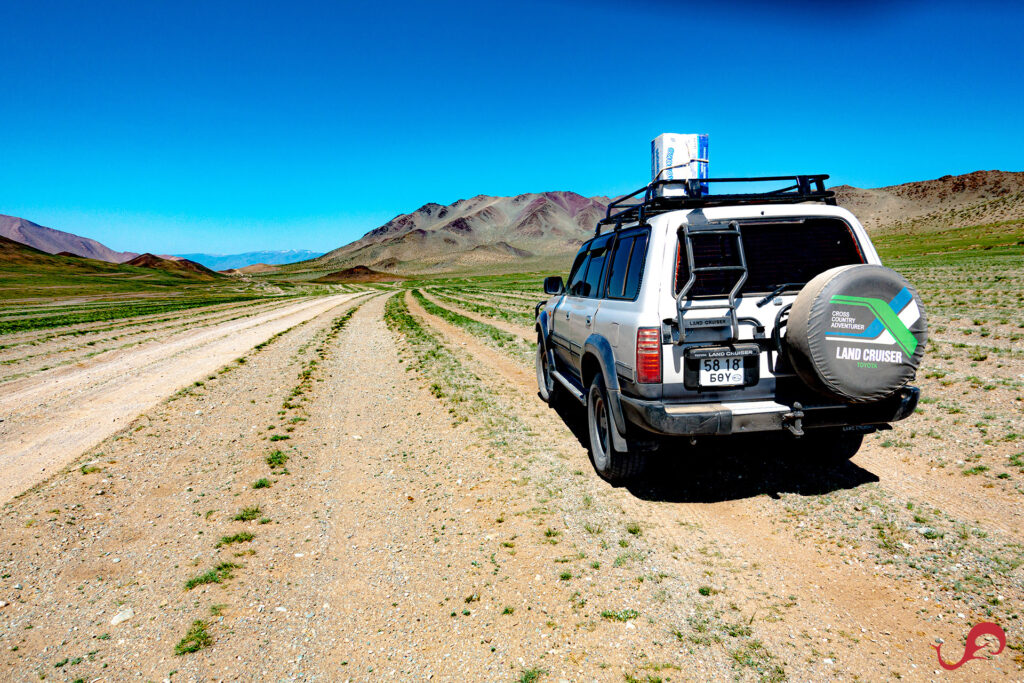
Okay, so we would ask someone, no problem. Well, sometimes we drove for hours without seeing a car, or a motorbike, or a horseman, or a ger (a traditional Mongolian portable home for the nomads). They were very helpful when we met them. With our very limited Mongol (or sometimes Russian for the older generation or those who worked in the mines), communication was not easy. Most of the locals don’t read maps well. Tanya fared better with the Cyrillic alphabet and could do a decent pronunciation of Mongol, so we managed to get the names of the places right. I was better at keeping the communication going by hand signals, from many years of traveling in countries where the languages were limited. (The reason why I can communicate in 8 languages, and all bad…) Still, “universal language” was not always the same.
As the conversation goes
The Mongols and later the Kazakhs in the northwest were good just to chatter away in a long rhyme. When they finished, we said “thank you.” Then, looking at each other: “Did you get that?”
“No.”
“But did he not show this way and left after the river?”
“I understood after that hill and then right on the river.”
“Wasn’t that after the lake on the west side?”
“Ok, we try this way?”
“Ok.”
100 km later we realized that we understood wrong. In one of the times when we turned back, the back rack of our motorcycle totally broke off. We mended it with rope and knots, and continued driving at an agonizingly slow pace. I’m happy to be a sailor who knows knots…
Sand, marmot holes, and animal tracks
I hate sand! It was almost impossible to have full control when driving an overloaded motorbike. I thought it was my skills. However, an experienced motorcycle herder made me understand that it was not only me. He asked me to step off after having me on the back of his bike for only a short ride. He said it was better for me to wait there and that he would pick me up on the way back.
We also had animal tracks and marmot holes to watch out for…
We had one fall wherein I hit my tibia that I had split in a recent motorcycle accident in Mexico. It hit straight into the plate, of course! 9 hours of hard riding later, I could hardly step off the bike. We went the wrong way and found ourselves in a village 400 km away from Murun. We decided to stay here until I felt better. Undraa rescued us. She came all the way to Tes, where we were staying, to take us back to Murun. The X-rays showed that I was still ok, but the tissue around the knee got bruised up. I had to rest some before we could go out again. I have to say, having to squat with a damaged leg to take a sh*t was a pain. Most toilets in the countryside are not straightforward even if everything just goes straight down…
Why enjoy when you can suffer
One week later off we went again, but this time to the far west.
I needed to concentrate 100% while driving with a such a big load, so I didn’t get to enjoy the scenery as much I had wanted. We thought we would take it easy, but we often did 10-14 hours of riding.
I used to say, “Why enjoy when you can suffer?” We did enjoy exploring Mongolia on motorbike, but this was definitely a test on ourselves and standing each other in pretty challenging moments. I don’t think we had a real fight, but sometimes we got annoyed with each other. Like the time we went the wrong way for 250 km going to the wrong Altai… wondering why we were driving south towards the Chinese border and not more west. The driving was terrible in storm winds that pushed the bike sideways, and I had to compensate by leaning it towards the gusts. It was too strong to stop because then we got blown over. Once we finished fueling up in the wrong Altai, we had to drive 250 km back to the crossroad, where we were supposed to have turned left towards the right Altai.
Our filtered water pump and MSR Kitchen
We hydrated at every opportunity as driving takes a lot of water and sweat. We had a filtered water pump with us, and we collected water each time we saw a stream or river. It was really a lifesaver, not needing to cook it.
We used an MSR kitchen that worked on gasoline, diesel or kerosene. The MSR kitchens work fine, but they are a bit delicate. Wood is scarce in Mongolia, so animal dung is often used as an alternative.
Camping in minus 8 C to plus 30 C
We really enjoyed our tent. It’s a tent that was made by a family from the island I grew up on. Our Hilleberg tent stands winter storms and we fit well in it.
We had a routine—I untied our gear while Tanya started to set up the tent. It was like our home, and most often we tried to camp by some kind of water source.
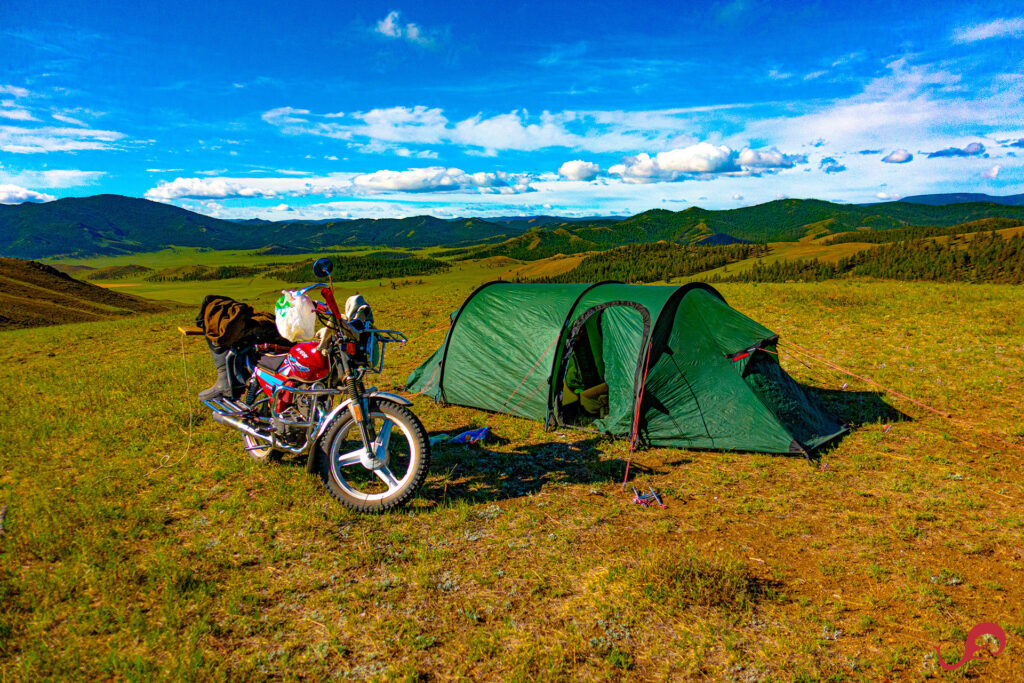
Exploring Northwestern Mongolia: Kazakhs, eagle hunters, and Mongolia's highest mountain
In northwestern Mongolia, you will find the highest mountains, the Kazakhs, the eagle hunters and a lot of Muslims. It is a different culture. Different style of dwellings. Yet the same welcoming people and beautiful landscape. We came early, so snow had just started to melt off.
We wanted to explore northwestern Mongolia comfortably, so we hired a driver for three days and left the bike in the capital. There were no other tourists to be seen during our home stays. We looked at rock carvings, deer stones, different kinds of burial grounds that we hadn’t seen in other parts. We had a car breakdown and we got lost even with a local driver. It was interesting to see how the animals—goats, yaks, and cows—came back at the end of the day to get segregated. The young ones went into an enclosure to be protected from nocturnal predators, while the females stayed close to the home to be milked in the morning. This was how it once was in my home country in Sweden around 70 years ago until it got industrialized.
The eagle hunting in Bayan-Ölgii is a bit of a tourist trap… even when it’s not peak tourist season in Mongolia. And, frankly, I didn’t really enjoy the way the eagle was kept. We went there, saw it, and left.
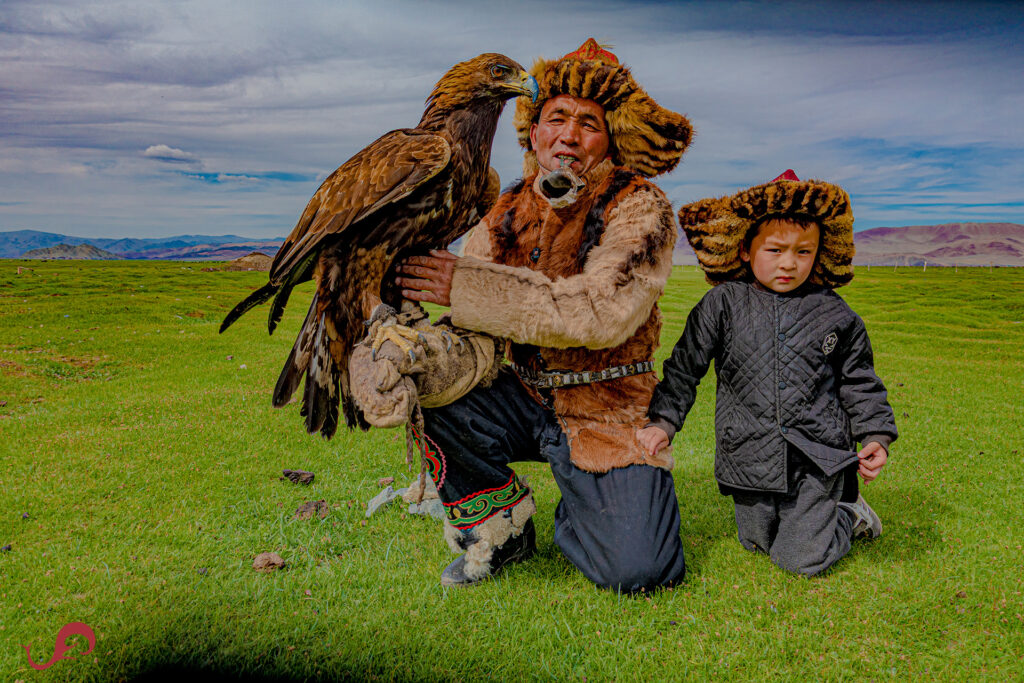
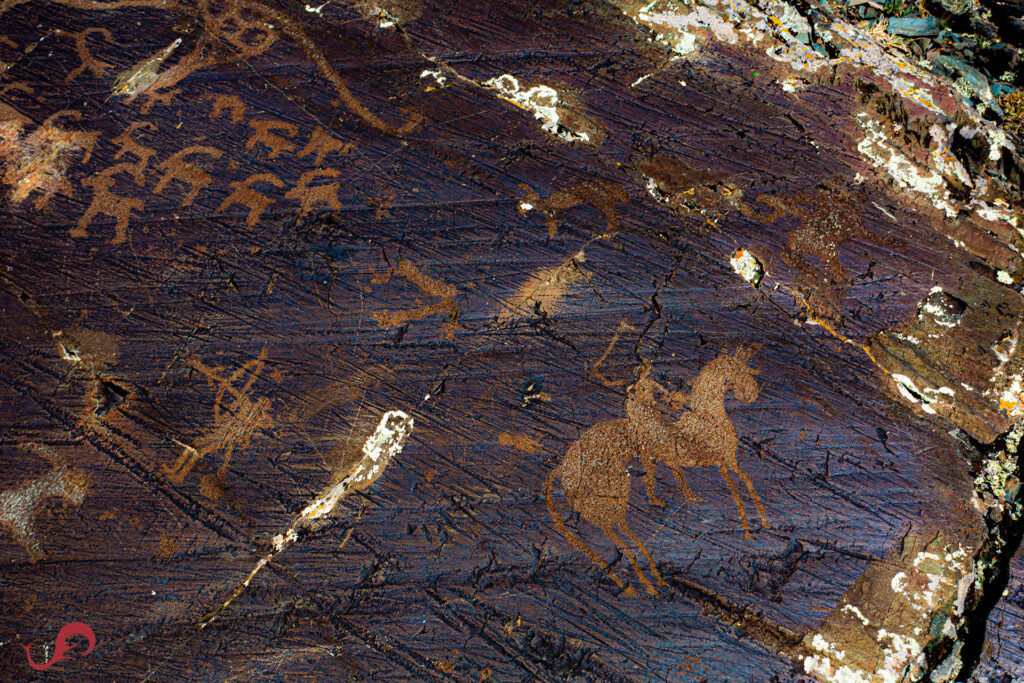
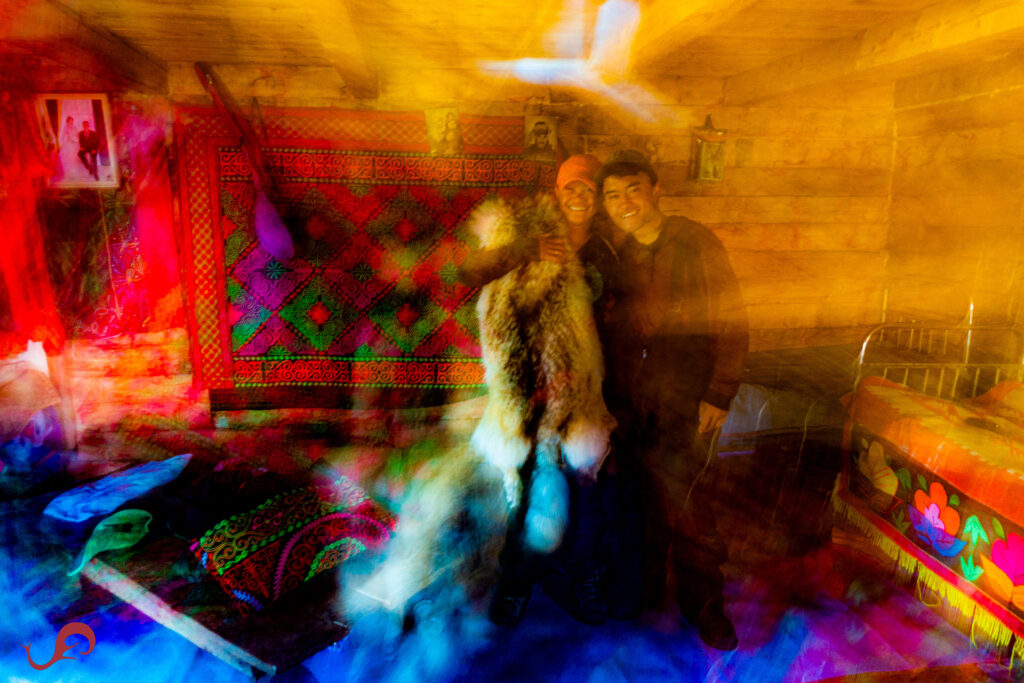
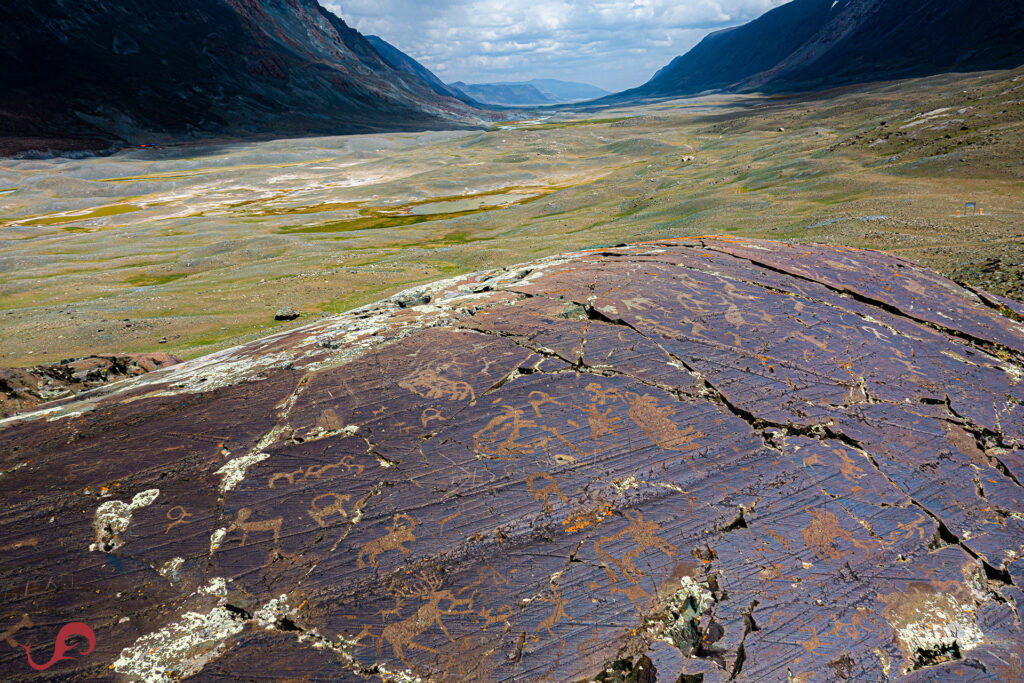
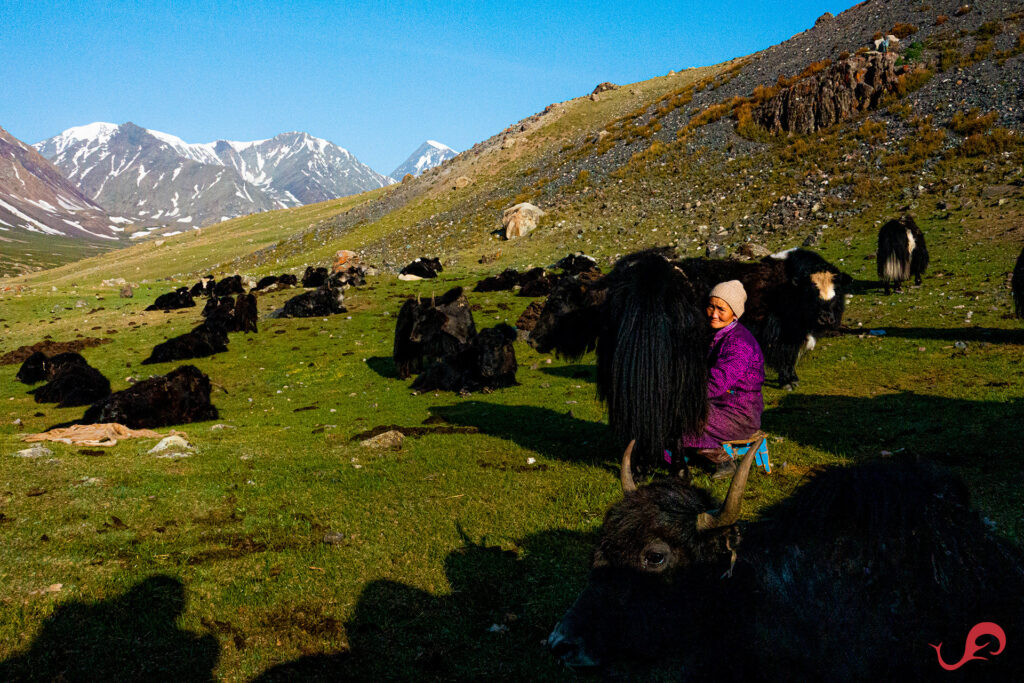
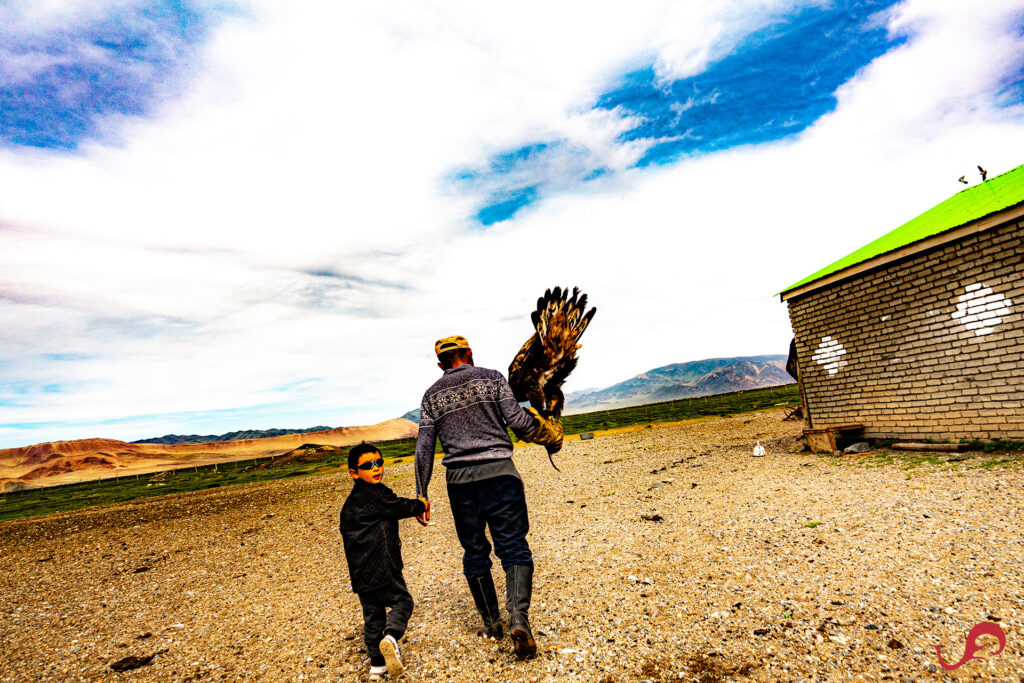
Two punctures in a day and unlimited roadside assistance
I was surprised to see our Chinese motorbike keeping up so well. I only needed to change the chain and the sprockets, and to have the broken back rack welded. It didn’t cost a fortune, less than USD900. It was also good having a motorcycle that all Mongolians were familiar with. When we had a double puncture, we immediately received help from passing nomads.
I remember one time, when a guy opened up his hood to connect his air pump (I had a hand pump) to the battery, he found a bird’s nest underneath… I wonder how often he checked his car… It was a Toyota Prius, the most common car in Mongolia.
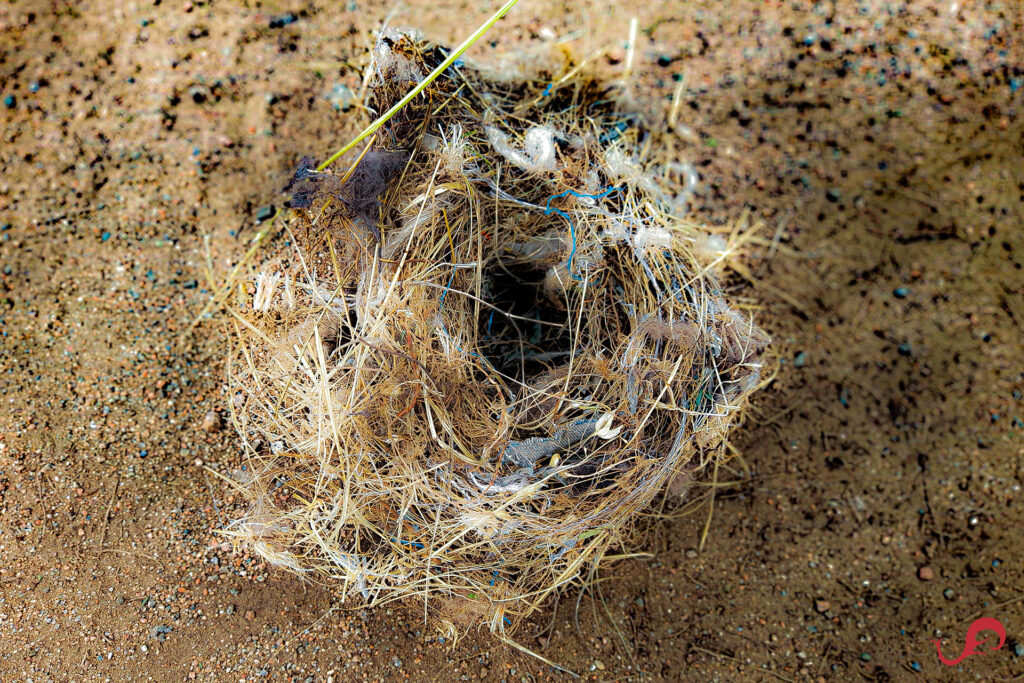
Helpfulness and resourcefulness going hand in hand
Three men stopped to help us with our second puncture on the same day. I had just bought a Russian inner tube, but the valve stem did not fit through the hole in the tire casing. One of the guys drove back to the village to get a file that would widen the hole. A friend joined him and both were well pickled with Chinggis Khan vodka (the only time I find Mongolians annoying) when they came back. I wasn’t allowed even to help out.
Nevertheless, we had two others (who were not pickled) staying with us for around two hours, and making sure to send us off well when our bike was ready. They offered their homes to spend the night. We expressed our gratitude, but respectfully declined as we wanted to keep on going while it was still light out. One of them still followed us for a bit and made sure we drove the right way.
We stayed on a beautiful hilltop that evening. The next day, after many days’ long riding, we reached asphalt and our friends Nara and Undraa in Murun.
'Take your time' takes on a new meaning
I noticed that in Mongolian culture, time is not of essence. The two gentlemen who kept us company for two hours just settled themselves on the grass, assumed “the position” (the formal way of sitting in the Asian culture), and got comfortable. 6-star luxury service does not compare to the genuine way that Mongolians go above and beyond to help out, most of the time without expecting anything in return. Although, people from the city can sometimes get entrepreneurial…
Mongolians are probably comparable to the Tuareg nomads in the Algerian Sahara or the Miskitos on the east coast of Nicaragua. I wish I could be a bit more like them.
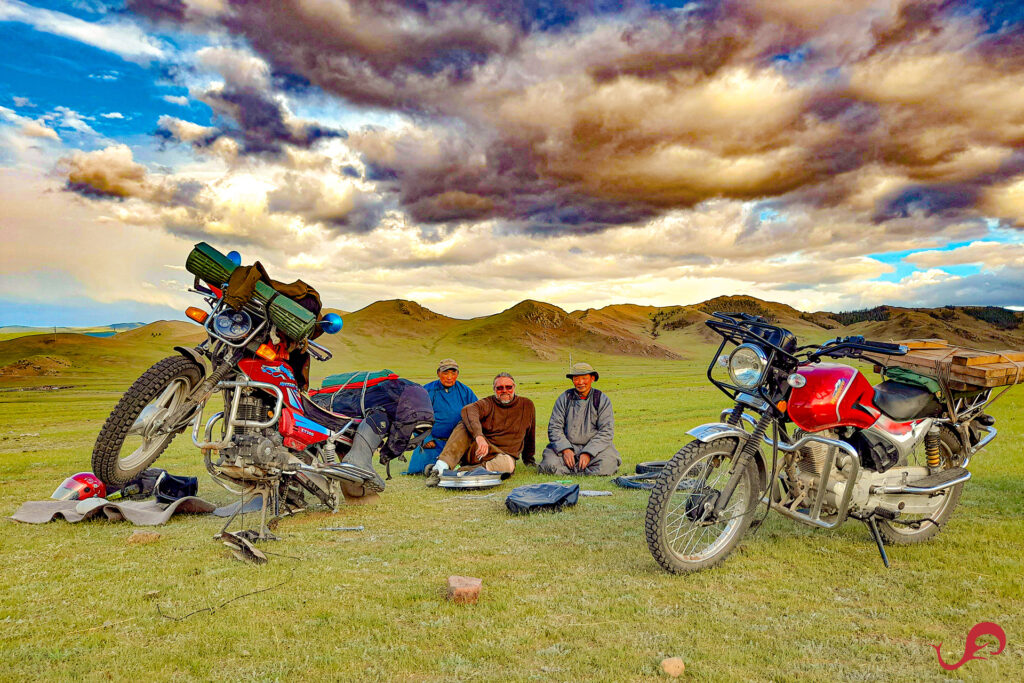
Discovering more of Mongolia: Castrating calves and goats, and then eating their balls
While staying with Nara and Undraa in their home in Murun, we were invited to help Nara’s family separate goats and one-year-old cows to castrate them. We helped out as much as we could, but Nara and his brother did most of the work. We needed more practice, that’s for sure.
When we finished with the procedure, we had a hearty meal of goat and cow balls. It was really tasty. And nothing got wasted.
Just being invited by our friends and taking part of it was an honor. Tanya wanted to take one kid goat home. They were pretty cute.
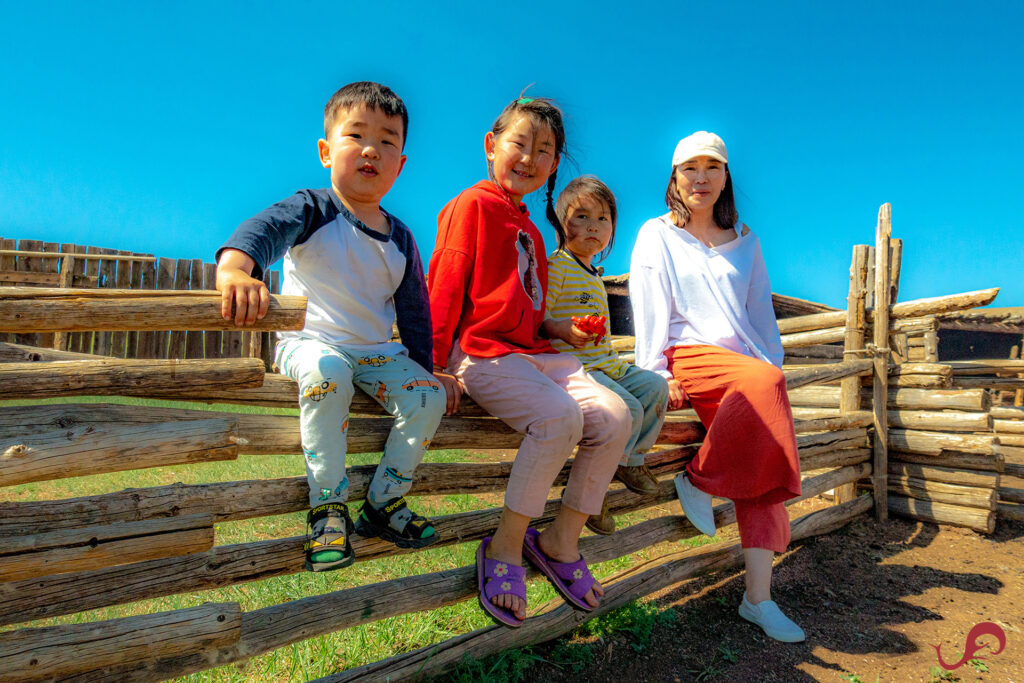
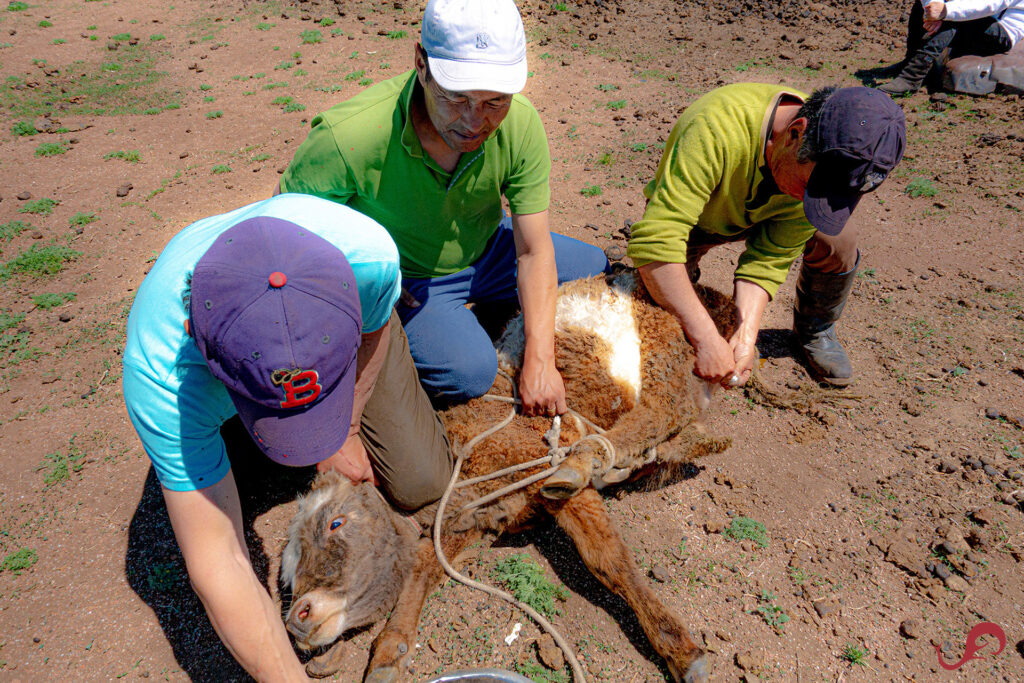
No Mongolian barbecue to be found
I’ll be honest, maybe the food is not on my Top 10 list. It will be hard for a vegetarian to travel to Mongolia and fully enjoy the experience because of this. There is a lot of meat and not so much spice other than salt and pepper, and onions. Having been living in Mexico, where we find at least 10 varieties of chili in the supermarket, it was a bit of a challenge for us. On the other hand, this is where I had some of the best meat soups I have ever tasted. They also make good smoked grayling (a fish that is not very common) and sausages.
You need to have an open mind if you want to explore Mongolian cuisine. Just don’t ask a Mongol about Mongolian barbecue because you will get the same reaction as when you ask a Swede about Swedish massage.
The Reindeer People
I come from the northwest of Sweden and lived close to the Sámi or “reindeer people.” My father had very close interactions with them when he was a horse herder in his youth. I, as well, encountered them often in my youth while hiking in the tundra and oversleeping in some of the last Swedish nomadic tents called “kåta.” Most of these kåtas are done and gone and, I must say, a lot of the Sámi culture and traditional lifestyle in Sweden have disappeared as well. While the Sámi don’t live a nomadic life anymore, they still handle reindeer; just with helicopters, 4WD vehicles, and snowmobiles nowadays. I don’t say it’s bad or good, just different.
The Reindeer People in Mongolia, or called the Tsaatan, have a lot of similarities to the Sámi and they are still practicing the lifestyle that used to exist in Sweden. There are just around 200 of them and they move several times a year with their reindeer. They are very close to their animals and use them more for milk and for transportation.
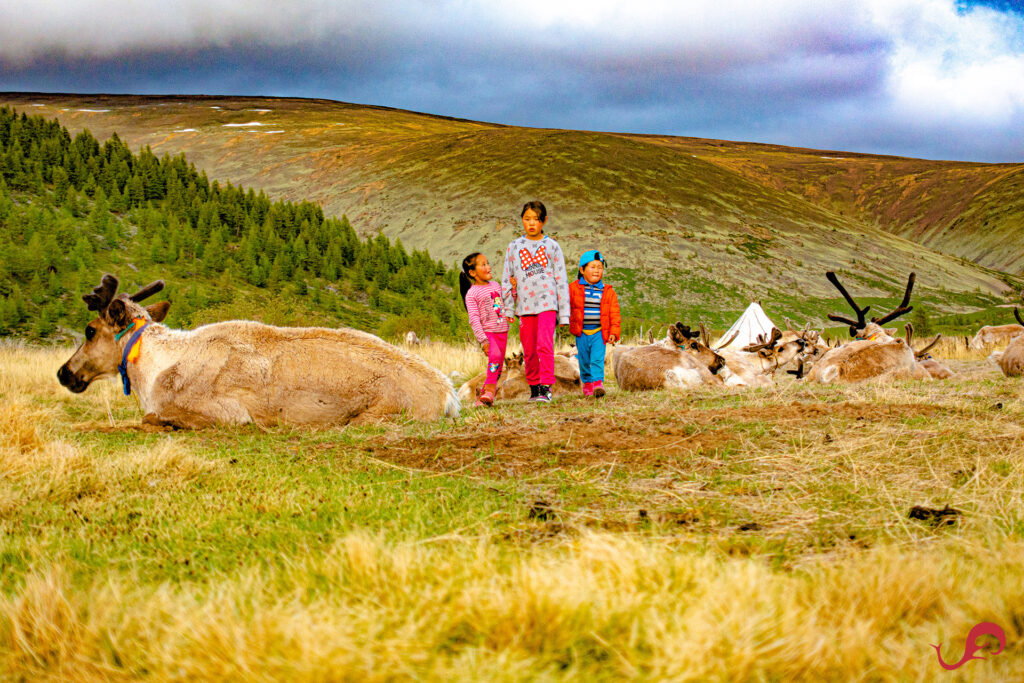
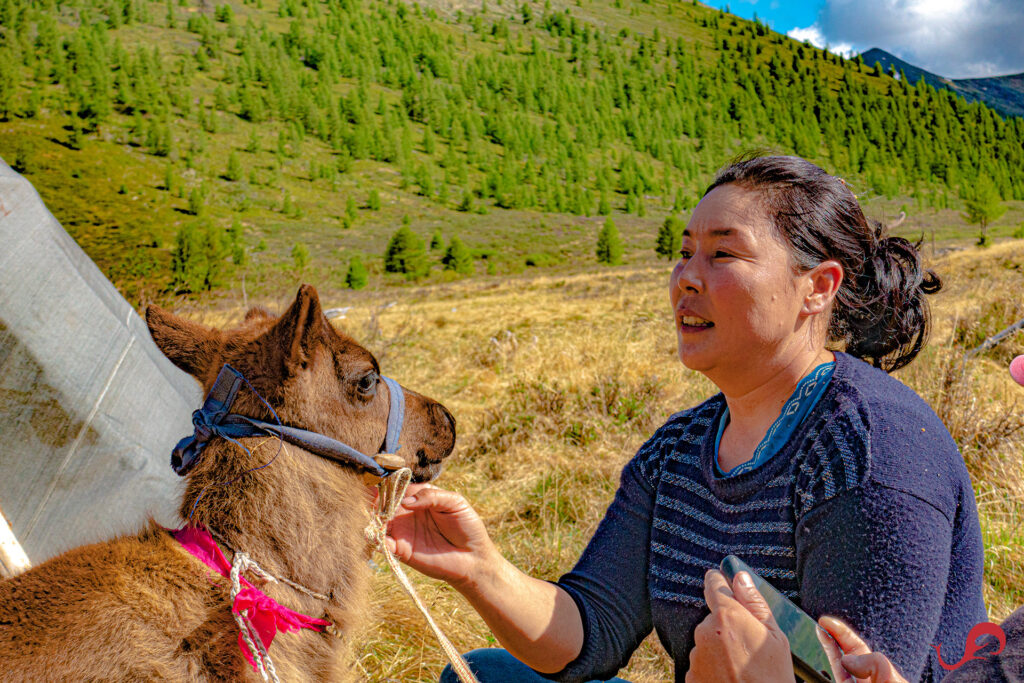
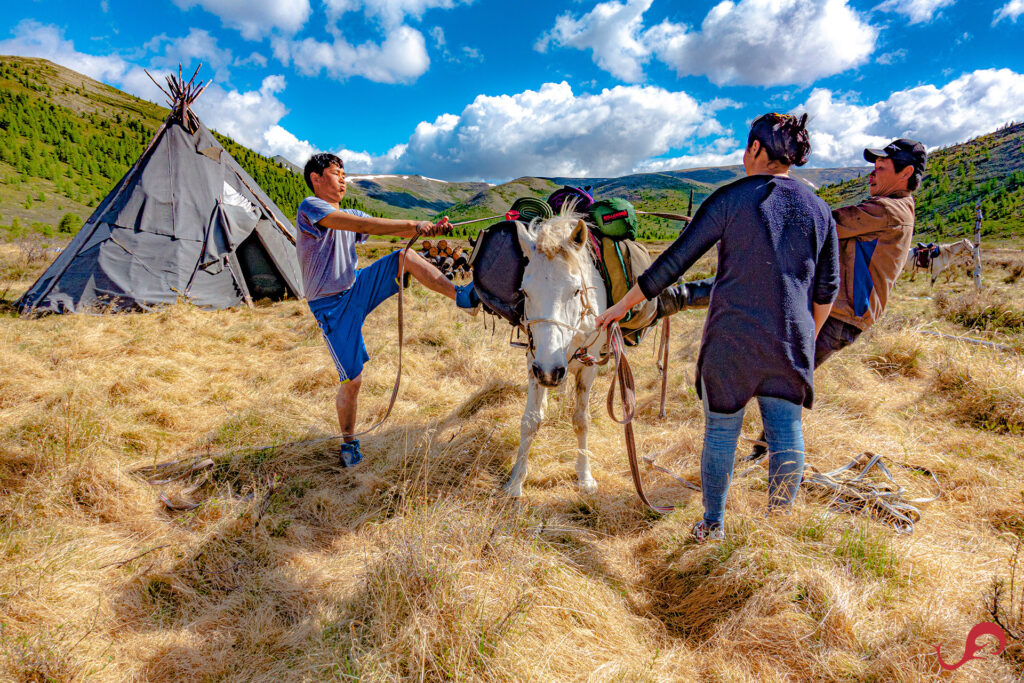
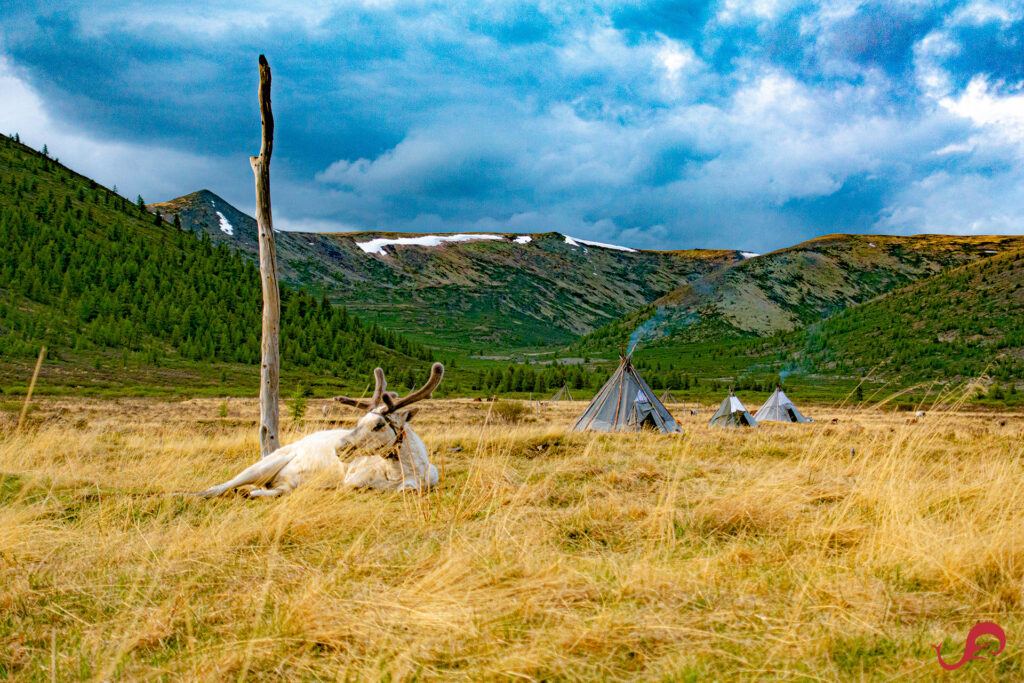
Some of their seasons are easy work, while things are a bit tougher in others —such as in brutal 40-degrees-below-zero winters. They are good hunters and good with nature. Growing up in nature, it was easy for me to recognize kindred spirits when I was with them.
the Tsaatan camp and horseback riding
We did 12 hours of driving off-road to get to a place where we met Sansar, our guide, and another 6-7 hours on horseback in what was akin to the Swedish tundra. We ended up in a valley with a camp of 11 families. It was a quiet and calm time, and we spent some of it hiking around the camp.
The riding was spectacular! Finally, the horses had enough power to carry a beast like me. The peace and quiet, the landscape. I enjoyed every moment. We had some cold wind and rain, but we were dressed appropriately. I could have done this for many days more. (I’m not sure my horse shared the same sentiment.)
The reindeer would return from their foraging in the evenings. Otgonjargal, Sansar’s wife, gave them salt, which was like candy to them. Tanya got her share of petting a reindeer calf. I have to admit, they are pretty cute animals. And good tasting. I mean, the milk…
Sansar and I did some bartering while we were in their camp. He got my binoculars in exchange for a knife that he made.
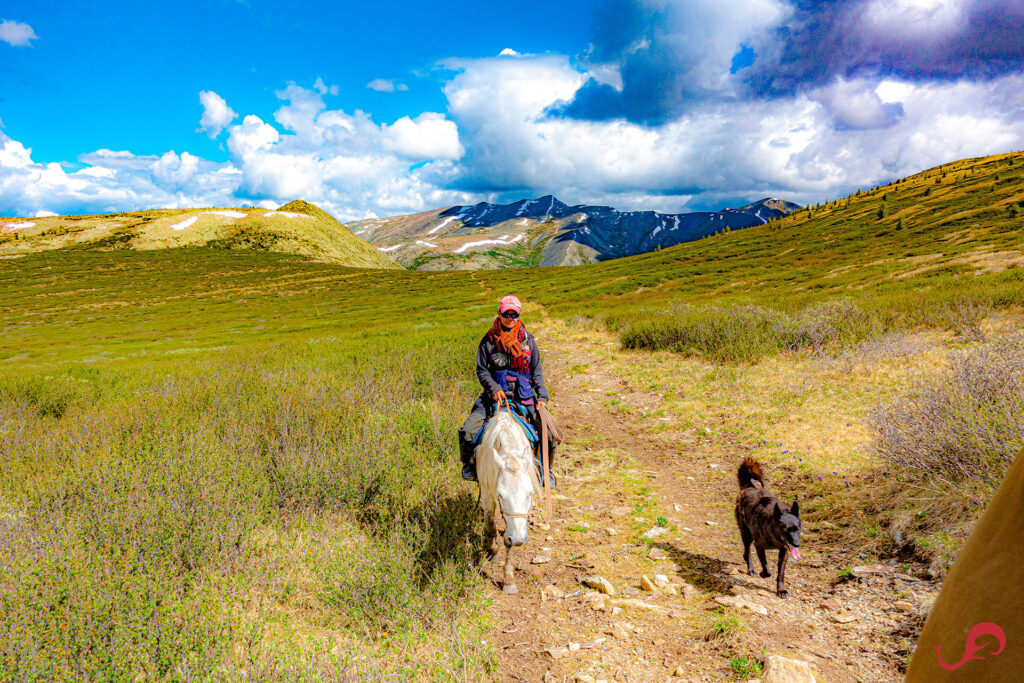
Riding back to civilization. Meanwhile, bears!
We also enjoyed the ride back. Compared to the way in, we had some pretty tough weather with close to 30 C temperatures and a lot of horse flies. On the way back, we had the privilege to see two bear cubs. The mother never showed up.
We left the horses at the meeting point and got a ride into town with Sansar. We spent the night in his log house, which his family uses for storing their off-season equipment. Nowadays, the Reindeer People also have a home base, which is especially useful when the children have to go to school.
The next day, we were able to find a ride back to Murun with some Tsaatan who were bringing some reindeer to Lake Khuvsgul for tourism. The Reindeer People have been a bit of a Mongolian tourist attraction. I can understand why and I see the same thing in Scandinavia. As long as it is respectful and mutually beneficial, I think it’s okay. If tourists want to explore this part of Mongolia, it will take some effort on their part to get to where the Tsaatan are.
This time it took us 18 hours to return to Murun. We split off with the Reindeer People when we reached the paved road to Lake Khuvsgul.
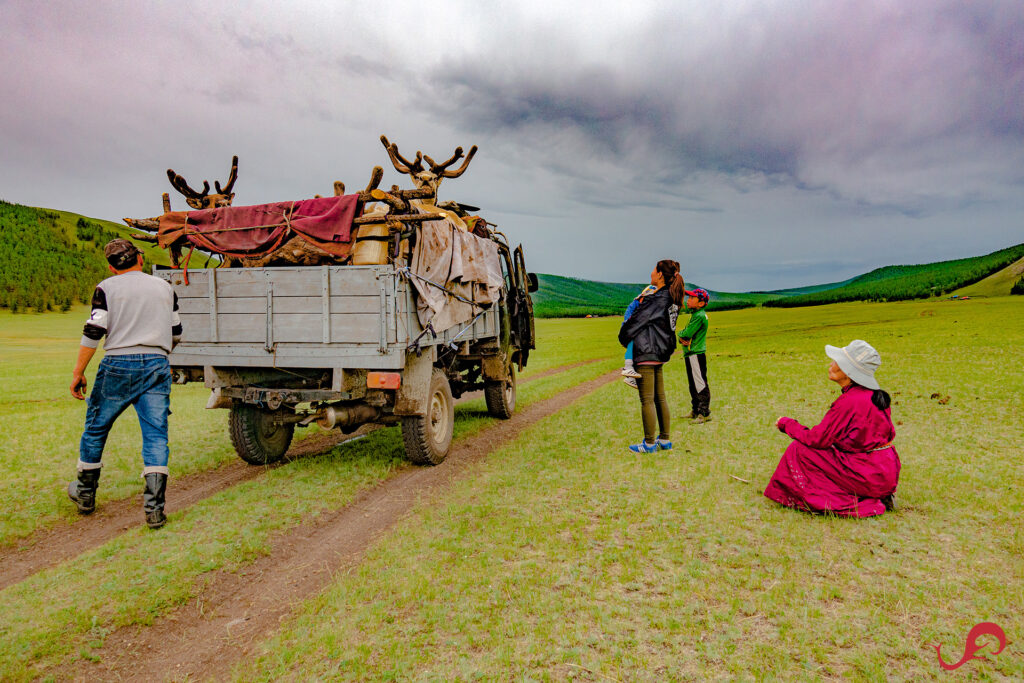
Going back home to Mexico
We left the motorcycle with Nara and Undraa. Tanya wanted me to sell it, but I fell in love with my Shineray Mustang and wanted to keep it for our next visit. We took the bus to Ulaanbaatar; flew via Istanbul, where we experienced a totally different culture; and then back home to La Paz in Baja California Sur.
Why did we go there again?
and why are we going back?
I think there are people who get hooked after they have experienced Mongolia. The few we met were long-time travelers and, in my eyes, very humble, curious, deeply-searching, adventurous people. They are not the bucket listers.
These months we moved around the country and travelled hard to see what was out there, to challenge ourselves, and to try to get a grasp of this country. We want to share what we have experienced with down-to-earth individuals in the future.
To explore Mongolia properly, one needs to have time and patience. I am trying to find a balance between sharing my passion with a few open-minded travelers and working with locals whom I trust. Hopefully, it will give you a boost of energy in life.
If my post was not long enough...
Thank you for giving me 20 minutes of your time to read my entire article. You just finished reading a 3,500-word piece, which is not common nowadays with people’s short attention span.
My wife diligently posted updates on Facebook while we were exploring Mongolia. You can check them out below. They complement this article and provide additional information on our trip, including details that I missed.
You can also just view our photos of Mongolia if you don’t want to read further: https://www.jamtsisu.com/album/mongolia/


